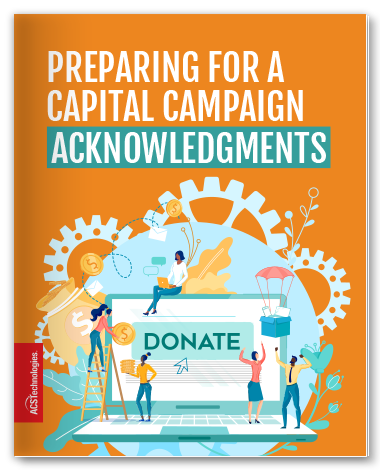Preparing for a Capital Campaign Part 2
Capital campaigns can be all-consuming in the life of any organization or ministry. For our churches to see a campaign to successful fruition, we first have to honestly assess our internal readiness.
In this blog series, we’re unpacking the key components of preparing your church for a campaign. When a church embarks on a capital project, it’s sometimes rushed and launched too quickly. Often, the pace is the natural outcome of our urgent need for a particular project or program. We hurry the very process that would help us ensure success.
Readiness
Today we’re talking specifically about campaign readiness. This is not a feasibility study, as we’ll unpack that in our next blog. This kind of readiness is about the internal structure and bandwidth of your church. Its about your programs, leaders, staff and volunteers.
Capital campaigns take an intense amount of work, from the pre-planning all the way through the post-acknowledgments of a three-year campaign, for example. Often this work has to be overlaid on the already-full day-to-day ministries and operations of your congregation. With the focus on the campaign project and what it means for your church, everything from your web, communications and marketing to your budget allocations will be impacted.
For a large congregation with a number of paid staff, this readiness assessment can entail a conversation about roles and bandwidth, identifying how each person’s work will touch the campaign. For a small congregation with only part-time paid staff and primarily volunteer leaders, this has to be a forthright discussion about how to best leverage each person’s skills and available bandwidth.
Workload
Your church’s key volunteers and leaders will inevitably be drawn into the campaign and asked to carry additional workloads, meetings and time commitments. Have a thorough and honest conversation about how that will affect your current programs and ministries. This includes determining what you will commit to do – or not do – over the next two to four years. There are many activities you might not do during the campaign years of your budget that you normally would, for example. There are also hard costs to the campaign itself (marketing pieces, mailings, events, etc.) to consider.
It’s worth having open forums – even using some time on a Sunday morning – to explore these realities with your congregation. Doing so not only prepares everyone for the realities of the additional labors needed, it also can give your members an imagination for how to best help the church navigate the challenge of allocating staff and volunteer time. A campaign is never one person’s job. It has to be embedded across the church. While it may impact some staff and volunteers more than others, it will impact everyone.
Conclusion
Asking and answering those internal readiness questions with your congregation will help identify the pressures that will be on your key leaders and programs. Help your members work through those assessments. And keep an eye on the end goal of your campaign project and its impact.
When a campaign isn’t successful, it usually comes back to a handful of common pitfalls. Not openly and candidly addressing internal church readiness is one of them.
Next time in this series on preparing your church for a campaign, we will dive into the components of feasibility and the readiness of your donor base.
The Foundation of a Successful Capital Campaign is Built on Donor Acknowledgment
When we consider how to best prepare our church for a campaign and the key components that help ensure success, we need to specifically look at how we treat our donors and prospects through the fundamentals of acknowledgments.
Find the right posture and acknowledgment processes for your donors with these practical tips from a seasoned ministry fundraiser.
For more information on Capital Campaigns, please visit our Consulting pages.
Tim has over 30 years of experience in Church, Non-Profit Administration, Management, and Fund Development. Serving as an Executive Pastor and Chief Development Officer in growing Churches and Non-Profit Organizations, he has provided a wide range of expertise and resources. Tim serves as the Founder and CEO of Non-Profit DNA. A boutique firm committed to helping nonprofits and churches. By building their capacity through fundraising, leadership, team building, staff recruiting, and coaching.





